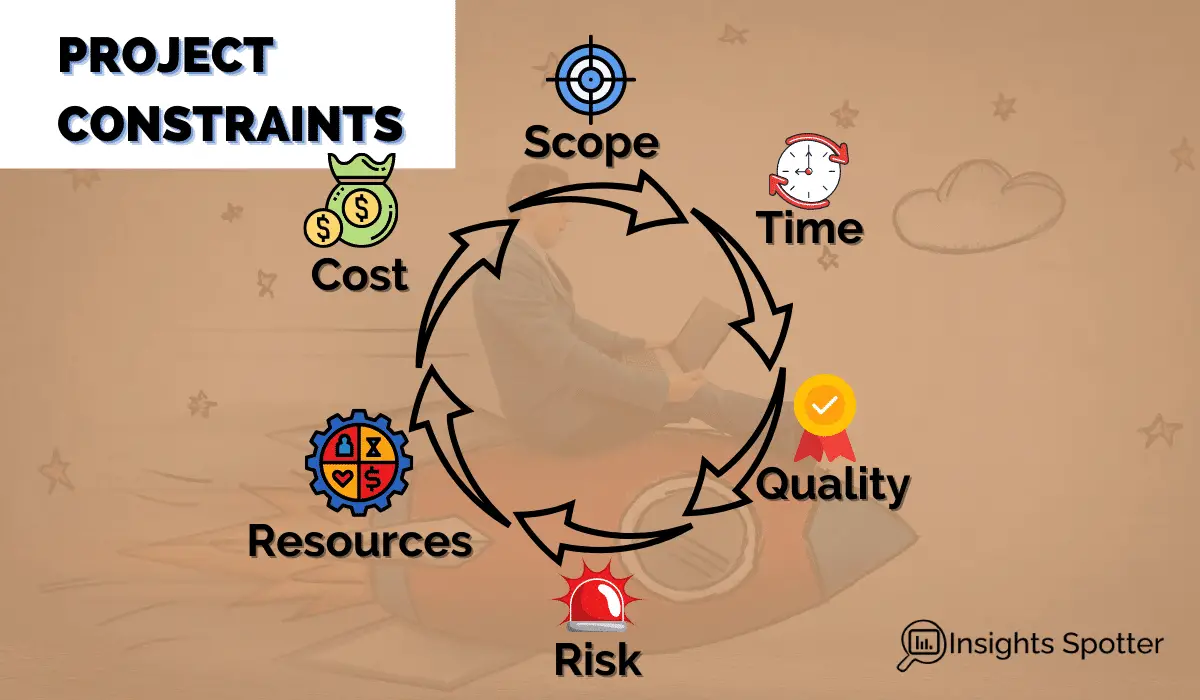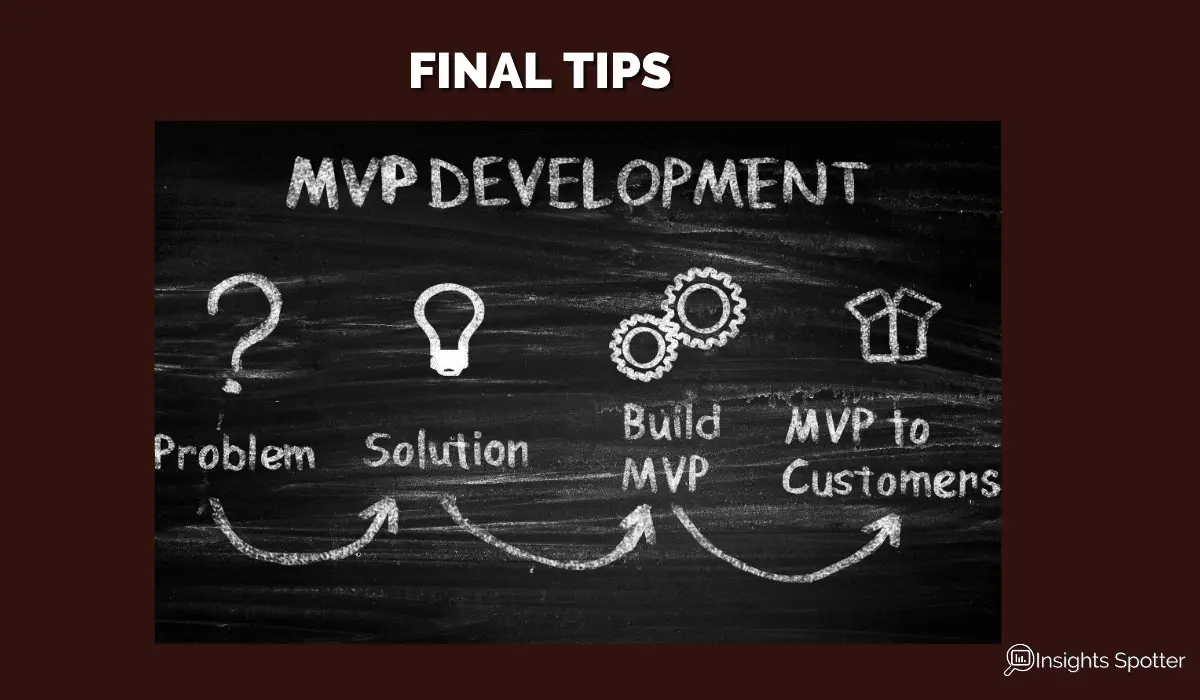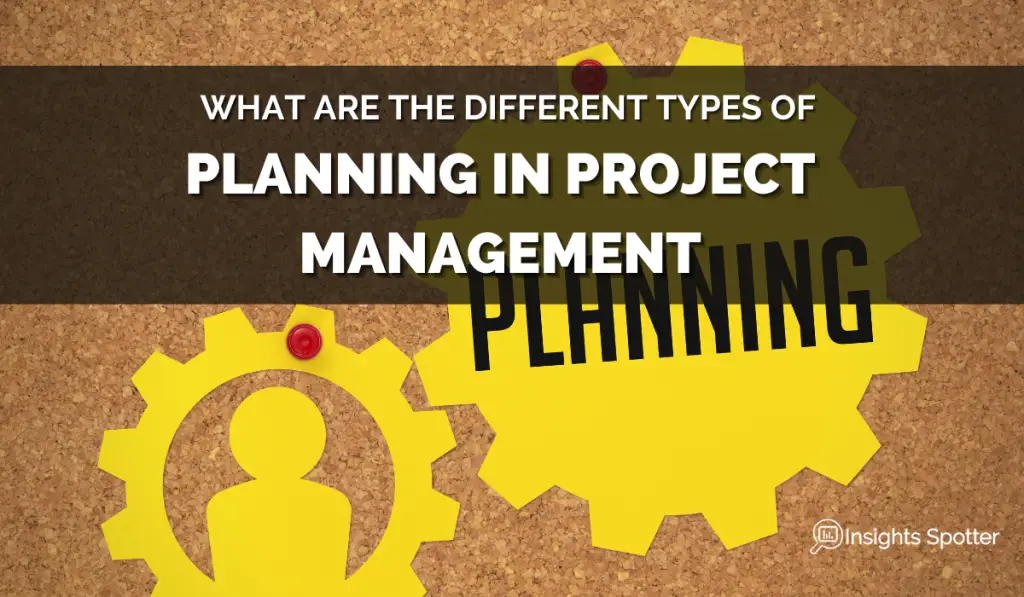How To Speed Up Your Project? Practical Advice
The project schedule is one of the pain points in project management. So, naturally, as a Project Manager, you would like to have optimal time to execute your initiative and account for all the significant risks to avoid those miserable conversations about missed deadlines. So, how can you speed up your project?
To speed up the project and deliver on time, you need to adjust your project constraints by reducing scope or quality, increasing resources, budget and risks. Plus, negotiating more time is an option to align with management. Finally, adjusting priority and increasing efficiency in tasks execution.
Management often wants results yesterday, which is always stressful. Still, there are multiple ways to address the problem; knowing some tips and tricks can help you speed up your initiative and align with senior stakeholders’ views.
In the rest of the post, we will dive into each of the points in more detail and understand how you can practically shave a bit of time from the project to deliver in line with senior stakeholders. A lot will be based on my experience, so I know these strategies work. Let’s have some problem-solving.

How to Speed A Project Up Through Project Constraints?
Interconnected project constraints limit all projects. If you like to change one, others will be affected as well. We can use this to our advantage when considering project time. Let’s have a look.
1. Scope: Reduce Requirements or Scope
Clearly, by reducing the project’s scope or requirements, you may save time and execute the project within the schedule required by the organisation. However, you should be careful as you also lose some functionality.
Hence, you may want to have a one-to-one open discussion with your project sponsor, explaining the current timeline situation. Then try to understand requirements or scope elements that add little to no value; they are usually classified as “nice-to-haves”.
Low-value needs are the primary option to remove from the project and reduce your timelines. Even if you lose functionality, it will have a limited impact on the business outcomes. You will need to get approvals from your sponsor or SteerCo to make the change. If they are not willing to sacrifice scope, you might get additional resources or funding.
You usually have “nice-to-haves” in the requirements document because the business hoped to get some bonus benefits within project resources, but it is not essential.
2. Risk: Increase the risk
You might have been playing on the safe side and planning your project a bit too conservatively. It might sound counterintuitively increasing risk in the project, but every project has some risks, to be fair. The project managers job is to execute the project most optimally; it does not mean it is the path with the lowest risk.
Therefore, you might want to review your assumptions, links between various tasks and see if there is some time you can save by taking a bit more managed and calculated risks. Say, you could start building architecture before signing a vendor if you believe it is likely to fit well in the organisation.
3. Quality: Compromise Quality
Quality is a bit difficult to measure but often is linked with how well the project requirements are met at the end. Therefore, if you manage to reduce the quality of deliverables, you might reduce the time you need to execute the project. The option would not be very popular with your stakeholders. But there are situations where it might be possible.
One situation could be that you have started the project to test an idea, and you are actually building a prototype or MVP. Then you might skip on some of the fancy non-functional requirements like a complex database or very vast servers and just cut corners with low-grade options to complete the test. We discuss MVP later in the post as well.

4. Resources: Adding Resources or Crashing
In theory, you might be able to reduce the lengths of various tasks you need to complete in the project by throwing more resources, called “Crashing”. Additional resources will cost extra, but the project might finish faster. Unfortunately, things are not as simple and throwing more cash at the problem may not solve the problem.
My initial educational background is in economics, and you can often see the classic example of adding labour to the company in economics theory. There is a marginal return to additional labour, which means that doubling resources will not double output. There are several reasons for the phenomenon.
One is that additional staff would need to use the same tools or subject matter experts (i.e. SMEs’). Therefore, they might not be able to start their tasks as everyone is sharing the same resources.
Two is that there will be additional communication overhead. The project manager will need to manage more resources, which means more meeting and alignment, translating into less actual work.
Three is that they will need to spend time acclimatising to the project environment and existing team, maybe will need additional training. It is like building a team and going through all the phases Forming, Storming, Norming, and Performing, but only with those that have recently joined. Thus, the new joiner will not be 100% productive in the beginning.
5. Resources & Budget: Outsourcing Project Work
If your project has the added extra budget to spear or, in general, has good funding due to strategic importance to the company, you might consider consultants.
Consultants are usually like a SWAT team that specialises in a particular area. If you find one that links nicely with your project deliverables, you might want to consider them. They will free up companies resources to accomplish other tasks where they are more suited to do. Overall, you should be able to cut project timelines without sacrificing quality.
However, consultants come at a price that you agree to in contracts daily or hourly. The reasons are because they usually work for a larger organisation with partners and so on. Thus, directly or indirectly, you would be paying:
- Consultants salary,
- Tax linked with that employee,
- Partner’s salary,
- Profits for the organisation
- The premium for premium service they can offer in terms of quality and deliverables.
However, there are also some other indirect benefits like the companies employees learning from experts in the field. Therefore, the next project for the company might be more straightforward even without experts help.
6. Time: Scheduling Overtime (strategically)
Probably the easiest and most used way to cut project timelines or correct course is to have overtime. In theory, if you ask your team to work 60 hours instead of 40 per week, you should get 40%-50% more done. There are also some benefits, which addresses issues we saw in adding new resources before.
If you are working with the same people, you do not have additional communication overhead, and no additional team members share the same resources. Plus, if people are paid monthly salaries on the project, you might avoid increasing budgets. Finally, when you work late hours, you have fewer distractions with never-ending meetings during working hours.
However, you might have already thought about few disadvantages.
Firstly, if you have an hourly worker on your staff, you need to pay overtime and additional cost if working weekends or holidays.
Secondly, if overtime is not strategically placed and continues for an extended period, you will start seeing burnout, personal issues and eventually turnover. If you see turnover, you will need to invest more to get new staff and train them or wait until they adjust to the new organisation, which takes 1-2 months. Then you need to ask yourself if you should have paid for additional resources in the first place.
Eventually, we need to address this flawed math problem where you increase your time by 50% and hope to see the same results in productivity. The problem is that individuals are not as productive in the late hours of the day. There are different opinions on how long you are productive, but the average I have seen is 6 hours per day. Therefore, clearly, even if you push for 11 hours a day, you might still be able to deliver 8-9 hours of productive work. In extreme cases, prolonged over time might lead to actually worse performance than usual working conditions due to fatigue, lower motivation, and stress.
Check out the graph below to see how productivity might look like for an extended period from A Life of Productivity.

Overall, we might want to use it over time as a tool in the box, but briefly. My personal recommendation is to keep it for a week. Then make a break and then doing it again. If you are running a Scrum project, you might be able to align with sprints.
In general, overtime should be strategically placed like a vital deadline within a week and not over abused. You need your team to be healthy because you will most definitely not finish the project alone. Thus, watch out for your team and negotiate with management as much as possible so you would not need to resort to overtime in the first place.

How to Speed Up Your Project Through Increasing Effectiveness?
You can cut timelines by maximising the productivity of the resources or being wise in your work.
1. Cut Out Dependencies To Increase Speed
In a project, you often have tasks that need to complete before you can start a second. Say you need to gather requirements before you can do an analysis. However, with additional dependencies you have, you need to extend your project and wait for some tasks to finish before proceeding.
Therefore, it is time to open your project plan and think about assumptions and reasons you had to depend on others for some tasks. Looking into options to reduce dependences will help you challenge your previous logic and potentially start working on some tasks earlier.
Check out the next section for more on starting tasks in parallel.
2. Increase work in parallel, a.k.a. Fast-Tracking
Are there project tasks that the team can do in parallel, also known as Fast-Tracking? Occasionally, it is possible to re-range project tasks and start some tasks in parallel. The team will need to demonstrate some creativity and be open and flexible to change agreed-on tasks’ flow previously. For example, reducing dependencies will unlock some of these options.
However, it is not always possible to do the tasks simultaneously, even if they can be done due to a lack of resources. Probably, you have just enough resources for your given plan. Therefore, if there are more tasks to complete in one time, you might need more people to help you out.
3. Stop Multitasking To Move Faster!
There are so many steps in any project. It is a false fallacy to believe that you should be taking all of them at once to speed up the process. Much research was done on the multitasking subject; I hate to break it, but it does not work. You switching between tasks is wasting valuable time. Your mind requires time to adjust to and be productive.
You should structure your project and day so key priorities are done one by one. It would help if you also worked with your team to have some focused time. Outlook “Insights” offer you to book “Focus Time” in your calendar automatically during the week. If the team and you can complete one critical task every day, you will have done five essential tasks by the end of the week.
If you would like to read a good book about prioritising your work, check out The ONE Thing By Gary Keller, Jay Papasan.
The following section is critical if you want to deliver the project on time in the post.

4. Prioritise, prioritise and prioritise
When we talk about project priorities, there are two levels. One is based on specific tasks each team member needs to do. Second is the project’s priority in the organisation.
The team and a project manager should constantly work together to prioritise tasks at each project stage. It should be a dynamic process as projects tend to change quickly and require adjustments.
I think frameworks like Kanban or Scrum have the upper hand over traditional project management as backlogs have dedicated individuals who spend time prioritising them constantly. The team then only works on the most critical tasks.
In traditional project management, the team might follow the project plan, but members might not be doing the most crucial task at the time.
In general, you are looking to prioritise your work. Hence, you produce the most value for the organisation now, understand the present sequence of tasks that need attention and avoid multitasking, leading to lower effectiveness.
On the other hand, you have priority of the project in the organisation. Various projects have different levels of importance when compared with other projects in an organisation. Those that are deemed to be more critical get more resources, attention and move faster. Things like people with decision rights showing up in your SteerCo or the ability to hire more expensive consultants.
So, if you are being asked to expedite your project, you should try to negotiate with your sponsor to bump up your project priority to improve your chances to hit new deadlines. Of course, the senior organisation’s managers will probably need to slow down some other initiatives. Therefore, these decisions are usually made in management boards, executive-level meetings.
5. Addressing Operational Inefficiencies To Speed Up Your Project
The project team needs a place to share work, collaborate, discuss new ideas. It would be best if you had tools that work fast and without issues. Each team member should have access to a computer in time and software they need to perform. Also, there should be easy to use sharing locations to collaborate on new deliverables. MS Teams seem to do a great job at that.
Another example could be a slow internet connection or way too many places that you need to update the same attributes, like project timelines. These might seem like small elements, but they could add up and increase the length of your project long term.
6. Automate Repetitive Tasks To Reduce Time Waste
If your project has multiple tasks that repeat themselves due to the similar nature of each project, you might have an opportunity to automate them through robotics or similar tools. Check your previous projects to see what does not require human intervention.
Do you have some marketing campaigns that can be automated; maybe you can create automated tools to track project progress and generate management reports. These are great ways to speed up your project by freeing your resource to contribute to higher value-added tasks.

How to Speed Up Your Project Through Human Factors?
Project activities need to be completed by the team and supported by various stakeholders. Therefore, if you would like to speed up the process, you need an experienced team and the right motivation to move forward fast.
1. Establish A Core Project Team, Your A-Team
At the beginning of the project, you should aim to establish a core project team. These individuals might not be part of the same departments, but it is a group of cross-functional team members who need to contribute often to project deliveries. These will be your leading SMEs, BAs and PMs.
You would like them to be close to the project and update them about the progress often. If you need to speed up deliveries, they will be well informed and hopefully quite flexible with their already invested time in the initiative.
If you like to read more about Stakeholder Management, check out my post: Stakeholder Management
2. Work On Employee Satisfaction, Happy Team Great Timeline
The core project team also needs to be motivated as any business team. Motivated individuals will complete more work and faster, simple as that.
There many ways to motivate individuals, but the one I really like is to consider the “Flow” type of experience. The idea is that work completed need to be just slightly more difficult than current individuals capabilities to make work exciting.
Another way to motivate is to take into account suggestions and contributions by individuals. The fastest way to lose somebodies motivation is to ignore them.
Finally, you should make sure that you never micromanage. Only give guidance, boundaries, explain the bigger picture and let the team work their magic.
Check out this YouTube video on the Flow experience.
3. Expert Team or Some Extra Training To Get The Things Done Fast
There is no way around this; your team members need to be experts in their fields. PMs and BAs need to know how to manage the project, and SMEs need to advise on the requirements for business. You will never move fast if core team members do not understand what needs to happen. If you have strict timelines negotiate for an experienced team.
Of course, some level of communication will be necessary to explain the project situation, timelines, deliverables. However, then individuals should know how to accomplish their project tasks. They are in the core team for this reason.
Unfortunately, sometimes you will not get a perfectly trained up team. In those situations, consider gaps in the team and complete training as soon as possible. It will work as compounded interest over the timeline of the project. Train up team will pick up more tasks and do them faster.
4. Stakeholder Management Is Not a Waste of Time!
Finally, you must not underestimate Stakeholder management. You will need their support and alliances to move the project faster through timelines. They will approve your resources and make steering decisions. Any of these are delayed, and you will be slowing down your progress.
When you start any initiative, you need to pay attention to who will be impacted by the project and their power over the deliverables. Those stakeholders that hold higher power and interest you need to keep on your side. When the project requires a push, you will go to them to get the support.
The project can actually fail due to miscommunication and misunderstandings on critical points of the initiative. Say when deciding in the SteerCo if to go with one particular vendor and the deadline is tomorrow.
It would help if you created a communication management plan where the team can plan out the communication with various stakeholders. If they are informed when you need their help, they will be more willing. Thus, you will have a chance to deliver your project on expedited timelines.
Again if you like to learn more, I have a post with some life examples to help you understand the essence of Stakeholder Management.

How to Speed Up Your Project Through Project Frameworks?
We have discussed people impacting the project timelines, but we must also examine the project setup that affects the project and the timeline.
1. Clear Traditional Project Management Process
Traditional project management tends to follow the Waterfall type execution. Therefore, tasks tend to follow each other with some occasional overlap.
Now, traditional project management has a lot of forms, processes, documentation and approvals. Ensuring that you are ready for all these at the beginning of the project means that you do not need to waste time later when timelines will be pressing.
Set up your project management process that is smooth and clear. Your plan tells you what is next, work is prioritised, and your PMO has all the templates you need. Combine this with stakeholder management we have discussed before, and you will be unstoppable.
Define your vision and objectives.
The team and stakeholders need to know where things are going. The project managers job is to give that direction. You cannot expect to finish the project on time or speed up if everyone is not on the same page.
Best Project Management Practices
Finally, follow best project management practices when it comes to requirement gathering. Do not skip steps:
- Requirements Gathering
- Requirements Analysis
- Requirements Validation.
Keeping with the process will allow you to uncover various GAPs, which would cost you considerably in time later in the process.
Imagine you are building a house, but none of the requirements said anything about the type of roof. Sometimes that happens in the business, and validation and analysis in various workshops should uncover these.
2. Selecting Agile Approach Where It Makes Sense
Going Agile might not always make sense. But when you have no clear deliverables or objectives, and the business still has strict timelines, it could be a lifesaver as you can deliver value early and appease management with progress. Frameworks like Scrum allows you to provide value in increments.
In essence, the business does not care if your project will finish on time or not; they care about the deliverables and when they will get value out for them. Often they might see project work as just administration efforts.
Suppose you can set up the project, where the most valuable deliverables come in early. In that case, the business will find that the project is coming nicely and likely to give you some slack if you can provide some lower importance deliverable on the specified deadline.
Finally, you can reduce the size of deliveries and show progress quicker to management. Plus, in Agile, you practice pulling tasks by teams, but if you create a nice manage flow of work from one team to another, you will also maximise each team’s working capacity. Having smaller tasks will enable you to move them quickly through the delivery pipeline and limit bottlenecks.
If you would like to read more when you might not want to use agile, check out my post: WHEN SHOULD YOU NOT USE AGILE? NOT SO SIMPLE ANSWER

How to Speed Up Your Project With Some Final Tips?
We have looked into project constraints, human factors, project tools, efficiencies and frameworks. There are few other interesting options you can still explore. They might not fit in either of the previous categories but would be more overarching options.
1. MVP or Doing It Twice Will Impact Timelines
MVP stands for a minimum viable product. This means it is a product that is good enough to see customers’ reactions. Then you can use that information to improve the product and address some skipped steps to get a fully functional solution.
For example, you might be making a payment app, but instead of building all the features, you might do just payment functionality, with staff supporting it in the background.
But how does this help us to speed our project?
Well, you can agree with management to have multiple reiterations of the product to make it more market-ready. Thus, you could deliver the first version with the bear bones application. Then come back and improve it and enhance it. In a way, you reduce scope but still offer something that businesses can use.
The approach works well with Agile frameworks. However, you could have MVP with Traditional Project Management. You would just split the project into various phases with dedicated scope for each. If you negotiate MVP for the first phase, you might get away with smaller deliverables, which are more realistic given timelines, and now you have a chance.
3. Avoid The Problem to Deliver on Time
The final option is quite simple but sometimes worth remembering. If you know that your next phase or project will have time constraints try prepping for it early. Maybe the team can start collating requirements, or you start building project governance and plan.
Thus, you will be ready to go full speed when starting the project and maximise your chances to finish the project on time.
How to Speed Up Your Project Conclusion
When you get news that your project will need to be delivered in half of the time, first, keep calm. As you can see, there are multiple options you can take. Not all will make sense in your project.
Still, with some negotiation attempts, hard evidence, experience and applied strategies, you will get in a position to finish your project within managements’ expectations.
A lot of these negotiations you will do in initiation and planning, do not be afraid to start them as short term inconvenience and discomfort might save you long term stress. Good luck, and it is never easy, but it is worth it ;)!
Subscribe to our newsletter!
 ABOUT ME
ABOUT ME
I am an experienced ex. Business & Data Analyst and now a Project Manager with multiple years of experience gained in several international companies.
These days, business problems require data crunching and telling stories to make the right decisions. Simply put, business stakeholders need insights into their projects and deliveries.
This is where I come in. I have learned and applied Python, Power BI, SQL and Excel to analyse and present data. Also, I gained experience in Project Management and Business Analysis. So, I can not only spot insights but execute business decisions. Moreover, I can teach you as well. Read More
Best Books








Latest Blog Posts
- Navigating Project Management in a Matrix Organization: Challenges and Solutions
- Using Artificial Intelligence’s Power in Agile Project Management
- Sustainable Project Management: Trends, Tools, & Strategies
- Unlocking Strategic Value: How NIST CSF 2.0 Shapes Project Choices for Better Outcomes
- Cybersecurity Project Management: Protecting Your Digital Frontier
- What are the Different Types of Planning in Project Management?

Need Project Manager’s Help!?
Check out the Fiverr marketplace if you do not have time to run your own projects or just need extra help. They do have multiple project professionals, including project managers. Maybe you will find just the right fit to take some burden from you. I have used Fiverr in the past. The prices are also not too bad. If you seek PM via the corporate route, it will be easily 5x the price.

